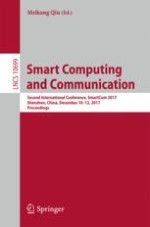2018 | Buch
Smart Computing and Communication
Second International Conference, SmartCom 2017, Shenzhen, China, December 10-12, 2017, Proceedings
herausgegeben von: Meikang Qiu
Verlag: Springer International Publishing
Buchreihe : Lecture Notes in Computer Science
